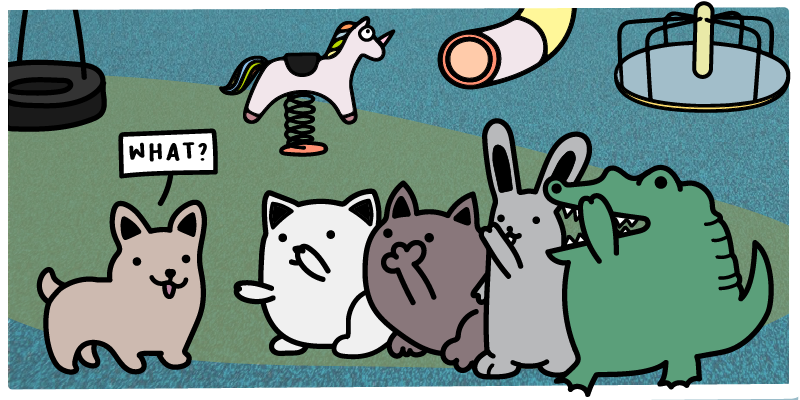In an ever-evolving digital landscape, businesses continue to rely on an array of software apps to manage their daily operations effectively. One of the critical components of this ecosystem is the CRM system, which is designed to organize and manage customer data. Companies often use CRMs in tandem with third-party apps in order to create a tech stack that meets all their needs.
However, ensuring seamless data synchronization and integration between CRMs and those apps presents a multitude of challenges. Here are a few examples.
- Data may be inconsistent or use different formatting from one platform to the next, impacting automation or other features in your CRM.
- Your integrated apps may identify existing records differently from your CRM, resulting in the creation of duplicate records.
- You may need to take special care to keep the sync intact when you merge duplicate records.
- Conflicts may arise if data is updated simultaneously across both systems.
- Nuances such as inconsistent picklist fields may cause the sync between records to break.
And when you have multiple apps connected to your CRM, you may run into these issues with each of them. Together, they can cause many negative impacts on a business while being difficult to identify and alleviate.
Why Reliable Integrations Between CRMs and Other Systems Are Critical for Companies
As organizations increasingly rely on a diverse array of apps to manage various aspects of their operations, seamless integration has become crucial. Businesses that are able to maintain reliable data synchronization between their CRMs and integrated systems enjoy a number of advantages. Let’s take a look.
Improved efficiency: Different apps in your tech stack are likely used by different departments. A seamless integration between CRM systems and integrated apps ensures that all departments within an organization have access to accurate and up-to-date information. This streamlines workflows and reduces the time spent on manual data entry, updates, and cross-referencing, allowing employees to focus on more strategic, value-adding tasks.
Enhanced decision-making: Reliable data syncs between CRMs and integrated apps provide a unified view of customer information, sales data, marketing metrics, and other critical business insights. By ensuring that all decision-makers have access to accurate and comprehensive data, organizations can make more informed decisions, optimize resource allocation, and identify new opportunities for growth.
Exceptional customer experiences: A well-integrated CRM system can significantly improve customer experiences by providing a 360-degree view of customer interactions across all touchpoints. Reliable app integrations ensure that customer information is updated in real time, allowing sales, marketing, and support teams to deliver personalized and timely experiences that foster customer loyalty and drive revenue growth.
Reduced data silos: Seamless integrations and data syncs between CRMs and integrated apps help break down data silos within an organization. By centralizing and harmonizing data from various sources, businesses can create a single source of truth that promotes collaboration, enhances data visibility, and ensures that all teams have access to the information they need to perform their tasks effectively.
Enhanced data quality: Reliable integrations play a critical role in maintaining the accuracy and quality of data within an organization.
Reliable data syncs between CRMs and integrated apps are essential for businesses seeking to maintain a competitive edge in an increasingly data-driven world. Without them, companies descend into a morass of issues that can stymie the growth of their business and require significant time and expense to climb out of.
Let’s look at some of the common problems that people run into with integrations between their CRM and third-party apps.
Common Issues With CRMs and Integrated Apps
There are many common issues associated with CRMs and the apps that integrate with them. These include:
- inconsistent field data that breaks syncs
- duplicate data that breaks the single customer view
- trouble merging duplicate records across platforms
- missing sync options that limit integration possibilities
- difficulty in managing associations between apps
- app or CRM updates that break the sync and leave you waiting months—or forever—for the solution provider to address the issue
Let’s take a closer look at these problems.
Inconsistent Field Data Breaks Syncs
Data inconsistency poses a significant challenge for businesses seeking to integrate their CRM systems with other systems. Different systems are designed to fulfill specific purposes, and their developers may employ unique data structures or fields to optimize their functionality. When these platforms have data structures, fields, or naming conventions that are different from those of the main CRM, data syncs can break.
Take Salesforce and HubSpot as an example. If you have integrated your Salesforce and HubSpot databases, you may have experienced the frustration caused by mismatched state and country fields. To ensure smooth data synchronization between the two platforms, the state and country fields must match exactly for each contact record in your database. If there is a discrepancy, the synchronization will fail and the record data will not be shared between the platforms.
Let’s look at an example:
|
HubSpot State Field |
Salesforce State Field |
|
WA |
Washington |
Both of these examples are conveying the same data, but because they do not match exactly, the sync would be broken.
However, standardizing the state and country fields across both platforms is not always so easy, particularly if you are using free text (also known as single-text fields), where you have no way to enforce a convention.
Without an enforced convention, the sync breaks. Once broken, those records become more inconsistent from one another over time as they receive different updates in each platform. For example, with a broken sync between two records, an update in Salesforce will not be reflected in HubSpot. This creates additional inconsistent data issues and confusion among your teams.
Duplicate Data Shatters the Single Customer View
Data duplication is another challenge that businesses face when syncing their CRM systems with third-party apps. The integration process can sometimes result in duplicate data entries, such as duplicate contacts or companies, which creates confusion for users, hinders sales and marketing efforts, and reduces overall data quality.
Duplicate data entries can arise from various factors, including human input errors, data entry formatting differences, and inconsistencies in data-matching algorithms. When a CRM system is cluttered with duplicates, it is difficult for users to identify and track relevant customer information. Moreover, data duplication can skew analytics and reporting, leading to inaccurate insights and potentially compromising business decisions.
For example, one common source of duplicate data from CRM and app integrations comes from third-party sales dialer apps. Sales teams commonly use such apps to automatically dial numbers so that salespeople can spend less time dialing and more time speaking with prospects.
Typically, these apps integrate with your CRM. They use phone numbers to match contacts within their databases to contacts in your CRM. If they can’t find a match, they will create new contact records.
This process is particularly error-prone because there are many commonly used phone number formats. It is very likely that the dialing software’s standard format differs from the standard format in your CRM. In that case the dialing software will not recognize an existing contact and will instead create a new, duplicate record.
Let’s look at an example:
|
Dialer Phone Number |
CRM Phone Number |
|
+1 425-689-9191 |
4256899191 |
In this case, the underlying phone numbers are the same. But because of formatting differences, the dialer software may not recognize them as the same, and instead of updating the existing contact with new information, it may create a new duplicate record.
While duplicates are a common problem among many dialing apps that connect with popular CRMs, they are not the only apps that have this issue. Duplicate records can be created by any app that attempts to match data in your CRM to determine whether it should update an existing record or create a new one. Many do not have the capability to identify advanced duplicates.
Duplicate Records Are Hard To Merge Across Platforms
Once there are duplicates in your system, merging them can be more difficult when you have apps integrated with your CRM.
When you merge records, you need to make sure that you merge down into a master record that is synced between the two platforms. If you do not, the sync between the records will break. This is a common issue for HubSpot and Salesforce integrations, but can be more complex than you might think.
Each platform might have its own way to identify duplicates. One may identify duplicates by matching email addresses, while the other matches first name, last name, and email address. As a result, each system will detect a different number of duplicates—making it even more difficult to merge everything down into one consistently synced record.
Then, each system may have different settings that can affect the way that duplicates are identified or merged, further complicating the situation.
Let’s take a look at an example:
|
HubSpot Duplicate Contact Record ID |
Salesforce Duplicate Contact Record ID |
|
14391617 (Synced) |
5103000000D8cuI (Synced) |
|
16314507 |
9403000000D8abc |
|
18234787 |
2203000000D8dun |
|
11346921 |
|
|
14157912 |
In this example, HubSpot identified five duplicate records for the same contact, while Salesforce identified three. To resolve these duplicates, you’d have to merge the records separately in both platforms to ensure that the resulting master record in each is the currently synced record. This requires a lot of manual analysis, but doing it any other way would break the sync.
And this is only one set of duplicates for one single contact. To clean your database, you will have to repeat this process for every contact with duplicates across your entire database.
Often, you’ll require a third-party duplicate merging tool or developer resources to help you navigate these situations.
Missing Sync Options Limit Integration Possibilities
Businesses need to integrate various platforms with their CRMs to manage customer data and keep records accurate and up-to-date. Syncing data between these platforms is necessary for operational reasons, but can be challenging, particularly when specific fields have no syncing options available.
A real-world example of this problem can be seen in attempts to sync Outreach.io, a sales email engagement platform, with other platforms like HubSpot. For instance, suppose a business wants to automatically sync the Outreach.io’s “stage” field with another platform’s "lifecycle stage" field so that updates made in Outreach.io are reflected in the other platform. If the available syncing options do not allow for both fields to be selected simultaneously, it will be impossible to sync updates made in both platforms accurately.
|
Outreach.io Stage |
HubSpot Lifecycle Stage |
|
Nurturing |
N/A (Cannot Sync) |
One potential solution to this problem is to create a custom field solely for syncing purposes. Then the new field could be synced with the desired field in the other platform, allowing updates to be made in both directions. However, this workaround can be cumbersome and time-consuming.
Managing Associations Between Apps Can Be Challenging
When you have apps integrated with your CRM, records between the platforms are typically associated with one another.
For example, if you use PandaDoc to store your contracts with customers, those contracts need to be associated with companies and deals in your CRMs. This is critical for being able to find relevant information from integrated apps in your ecosystem.
If the association breaks for any reason, such as when you merge duplicate records, you must be able to re-associate them. Managing this process on an ongoing basis can be cumbersome, but is ultimately required for smooth operations.
Third-Party Updates Can Break Syncs and Fixes Can Take Months
When you integrate your CRM with other apps, there are always nuances regarding how the data is handled and synced between them.
As time goes on, both your CRM and the integrated apps will receive updates. Their APIs may change. The way that they sync data may change. An update to your CRM may break something with the integrated app and vice versa. The platform may add new features, and the data produced by those features may not be immediately available for syncing with the other platform. An integrated app may become outdated over time, causing issues.
In situations like this, many companies are left hoping that either the CRM company or the integrated app company will fix these issues. However, there is no telling whether your particular integration type is a priority for those companies, and you may be left waiting months for a solution.
But if the issues that arise impact a vital part of your operations, you can’t afford to wait around for a fix to come through the pipeline. Companies need to respond to integration issues quickly, as they arise. Often, this requires development help to interface with both platforms’ APIs and develop a workaround for the broken aspect of the integration. Then, when the companies do get around to fixing the problem, you’ll need to spend time and resources again to undo the solution that you built.
How Insycle Helps Companies Maintain Reliable Data Between CRMs and Integrated Systems
Insycle is a powerful data management platform that gives you unparalleled control over managing integrations with your CRM system, including alleviating many of the pains discussed in this article.
Let’s take a look at how Insycle can help you navigate these situations, limit issues between your CRM and integrated apps, and ensure data is shared between them in a way that results in smooth, reliable operations across your departments.
Fix Inconsistent Field Data That Breaks Syncs
With Insycle, you can easily manage inconsistent field data that breaks the sync between your CRM and integrated apps.
This is a common issue involving the state and country fields in a HubSpot-Salesforce integration. If the state and country fields do not match exactly in both platforms, the sync between those records will be broken, and updates made in one platform will not be reflected in the other.
Ultimately, your goal here is to standardize these fields in a consistent way across both platforms. But if you are using a free text field to capture your state or country, that can make standardization difficult. Anyone who creates a record manually will need to follow the convention or the sync will be broken.
The alternative is to use a picklist field to standardize inputs. You can convert those free text fields to picklist fields in both Hubspot and Salesforce, but this alone won’t fix the problem, because those fields already contain data. If you convert the field outright, the picklist will contain all the variations of a single data point that were already in your database. If your picklist contains New York, NY, and New York State, you’re still vulnerable to inconsistent data that breaks the sync in the future.
In order to avoid this, you can move all data from these state/region and country/region fields to temporary custom fields for standardization.
 Moving the state/region and country/region field data to temporary custom fields in Insycle
Moving the state/region and country/region field data to temporary custom fields in Insycle
Then you can standardize the data that is now in those temporary custom fields.
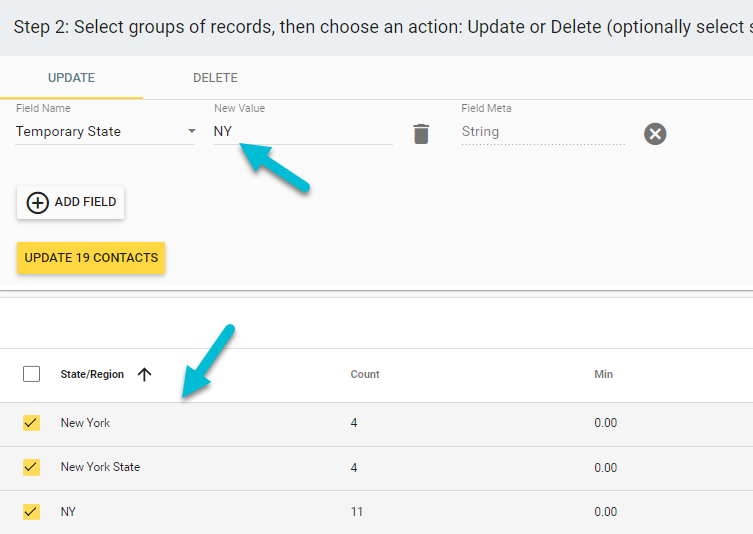
Standardizing states in your custom field using Insycle
With the data temporarily removed, you can convert the primary state/region and country/region fields to picklists. Then you can move the standardized data back into those fields, resulting in clean, consistent location data that does not break the sync.
To read a full, step-by-step breakdown of the entire process, look at our article on fixing state and country fields that break the HubSpot/Salesforce sync.
Stop Duplicate Data From Being Created by Integrations
Insycle can also help prevent the creation of duplicate records in the first place. As we discussed earlier in this article, many sales dialer apps search for records to update using a phone number. When a match is not identified, the apps will create a new record. But because there are dozens of potential phone number formats, this often leads to the creation of duplicate records.
With Insycle, you can format your phone number fields to ensure that your CRM and integrated dialing app are using the same format.

Formatting phone numbers using Insycle, to align your CRM with your app phone number formatting
Then the app will be able to identify existing records and will not create duplicates.
Merge Duplicate Records Across Platforms With Confidence
To maintain the sync when merging duplicate records across platforms, you have to merge down into a resulting master record that is synced between the two platforms.
Insycle makes this simple.
For instance, if you were merging contacts in HubSpot and wanted to keep the sync with Salesforce, you could ensure that your resulting master record is one that is currently synced with Salesforce.

Ensuring that the master record is the synced record between HubSpot and Salesforce
You can use the approach with other integrated apps as well.
Manage Associated Records Between Integrations
Managing associated records between your CRM and integrated apps can be painstaking and difficult. However, Insycle helps to simplify this process.
In one case, an Insycle customer used Insycle to fix an issue that arose between PandaDoc and HubSpot. The linked case study explains how merging duplicate companies was breaking the association between the companies and their PandaDoc deal contracts.
Issues like this arise all the time when you integrate other systems with your CRM. Each individual situation has its own nuances to consider. Insycle helps you diagnose the issue and design a solution that makes sense for your integrated app association management.
Work Around Missing Field Sync Options
Insycle also offers workarounds to help you achieve things that simply aren’t possible using your CRM and integrated systems. For example, you could use Insycle to resolve the previously mentioned problem of linking the Outreach.io lifecycle stage with the HubSpot lifecycle stage while the two are integrated.
You can use Insycle’s Magical Import module to work around this issue. With the module, you can import a .CSV from Outreach.io to create a template that anyone in your company can use to easily update the lifecycle stage in HubSpot.
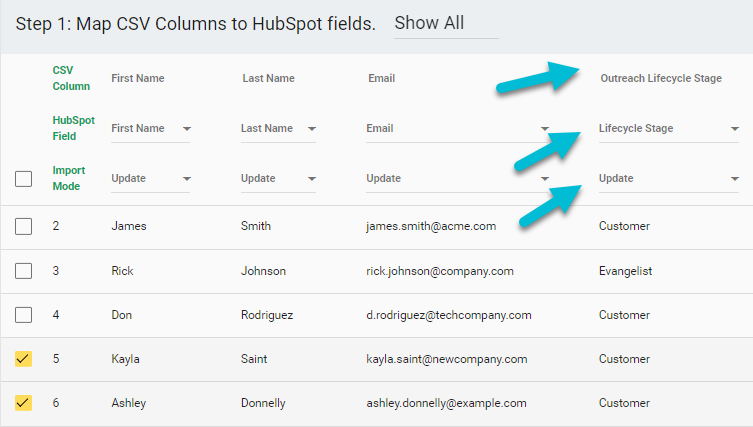
Importing lifecycle stages from Outreach.io to HubSpot using Insycle
The Magical Import module can help you fill in many such gaps that are not covered by the integrations themselves.
Analyze Issues To Identify Fixes
If you are able to identify a unique issue with your integration, there is a good chance that Insycle can help you fix it.
Insycle offers deep, customizable analysis features allowing you to slice and dice data in advanced ways, segmenting your database to the relevant records.
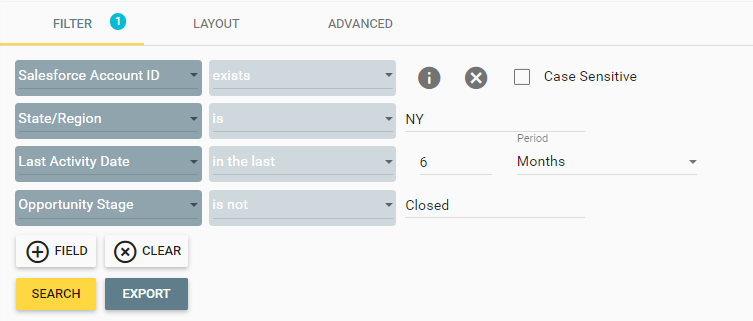
Filtering CRM data in advanced ways with Insycle
Then, you can analyze field data for any record that matches your filter. There, you can easily compare records against one another to understand what you have in your database and what specific issues you may find in each field, and begin the process of devising solutions for those problems.
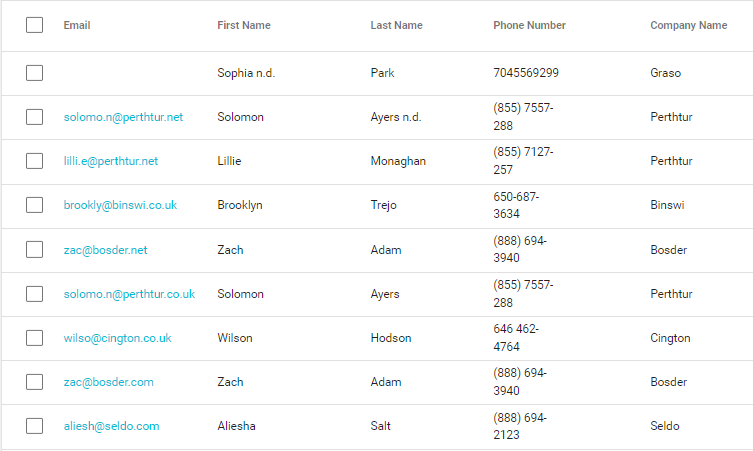
Analyzing field data for records that meet your filter in Insycle
In this way, you can diagnose and define solutions for even the most complex integration problems.
Become a CRM Data Management Wizard
Synchronizing data between a CRM and integrated systems presents businesses with numerous challenges, such as data inconsistency, duplication, limited options, and sync errors. These issues can impact efficiency, decision-making, and customer experiences, but they are avoidable.
Insycle provides an innovative solution that allows you to address and prevent these challenges. It is a powerful data management platform that helps companies maintain reliable data between CRMs and integrated systems.
However, Insycle's capabilities go beyond just addressing CRM and app integration challenges. The platform serves as a comprehensive data management tool for CRMs, enabling businesses to identify their most limiting data issues, optimize their data quality, streamline workflows, and enhance collaboration among teams. By facilitating data management, Insycle empowers organizations to break down data silos, gain valuable insights, and make more informed decisions based on accurate and up-to-date information.
Don't let data synchronization challenges hinder your business's potential for growth and success. Discover how Insycle can revolutionize your data management processes and help your organization unlock the full power of your CRM system and integrated apps.
